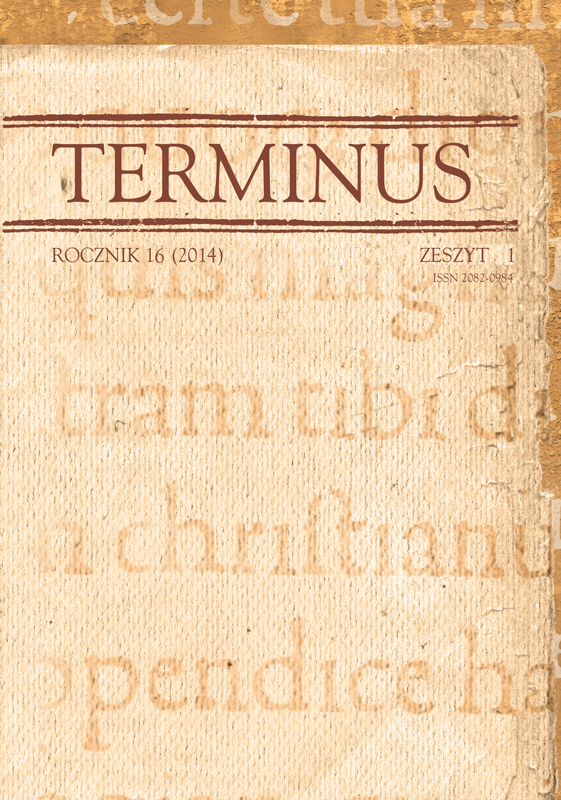Wanda – sarmacka amazonka w poezji łacińskiej w Polsce Od Jana z Wiślicy do Jana Kochanowskiego
Wanda – a Sarmatian Amazon in Latin poetry in Poland. From Jan of Wiślica to Jan Kochanowski
Author(s): Maria Łukaszewicz-ChantrySubject(s): Language and Literature Studies, Studies of Literature, Polish Literature
Published by: Wydawnictwo Uniwersytetu Jagiellońskiego
Keywords: królewna Wanda; Amazonka; virago; elegia ajtiologiczna; epyllion; epitalamium królewskie; samobójstwo; metamorfoza; aemulatio
Summary/Abstract: The aim of this paper is to show how Polish Renaissance poets reinterpreted the legend of Wanda and modelled the character of the princess depending on the chosen genre and the target readers. The author analyses the following source texts: Jan of Wiślica, Bellum Prutenum; Klemens Janicki, Vitae Regum Polonorum; Georgius Sabinus, De nuptiis Sigismundi Augusti et Elissae; Petrus Roysius, Hedvigis and Ad Proceres Polonos de matrimonio regio carmen; Joachim Bielski, Istulae convivium. In nuptiis Stephani Primi Regis Poloniae et Principis Annae; Jan Kochanowski, Elegiarum libri IV. In the canon of ancient rulers of Poland there is a woman called Wanda, daughter of Krak. This gallant virgin-king (in Poland a king could be male or female) who can be found in the oldest chronicles is also a character in Neo-Latin poetry. Jan of Wiślica in his epic poem Bellum Prutenum and Klemens Janicki in his cycle of historical epigrams Vitae Polonorum principium praise Wanda as a brave woman who equals Camilla, Semiramis and Tomyris in valour. In these two works the poets place the emphasis on Wanda’s heroic qualities as an excellent ruler and leader. On the other hand, Petrus Roysius looks disparagingly upon Wanda. In his poem Ad Proceres Polonos… he criticises her suicide as a sign of recklessness and concentration on her private life, which resulted in her shirking responsibility for the state she was entrusted with. Wanda’s story is a persuasive exemplum that was supposed to induce Sigismund August to consider a new matrimony that was crucial for reasons of state. In another poem, Hedvigis, Roysius reproaches Wanda for her exaggerated bashfulness, which drove her to such a desperate act. Wanda is also a character in royal epithalamia. Georgius Sabinus in his De nuptiis… presents Wanda as a beautiful, gallant and pure woman who lived the life of an Amazon. Her beauty attracted the attention of Istul, the god and king of Vistula. He kidnapped Wanda into the current of the river and made her his wife. In Istulae convicium… Joachim Bielski also depicted her as the unusually charming and refined spouse of the king of rivers. In both of these epithalamia Wanda does not commit suicide, but instead enters into matrimony. This is an innovation that departs from the canonical version of the legend. Jan Kochanowski dedicated one of his most beautiful elegies to Wanda, in which the Cracow Amazon becomes a responsible ruler and leader who acts according to the ethos of chivalry. The elegy is an aitiological epyllion that explains the origins of the name Mogiła upon Vistula. It is also in artistic rivalry with Propertius (IV 4). Here the brave Wanda becomes the opposite of the traitor Tarpei. For Renaissance authors the legend of Wanda is an opportunity to cleverly combine the ancient history of Poland with the tradition of ancient heroes, or a native legend with the legacy of Roman poetry, and thus to undertake emulation of the ancient poets.
Journal: TERMINUS
- Issue Year: 16/2014
- Issue No: 1 (30)
- Page Range: 71-91
- Page Count: 21
- Language: Polish

